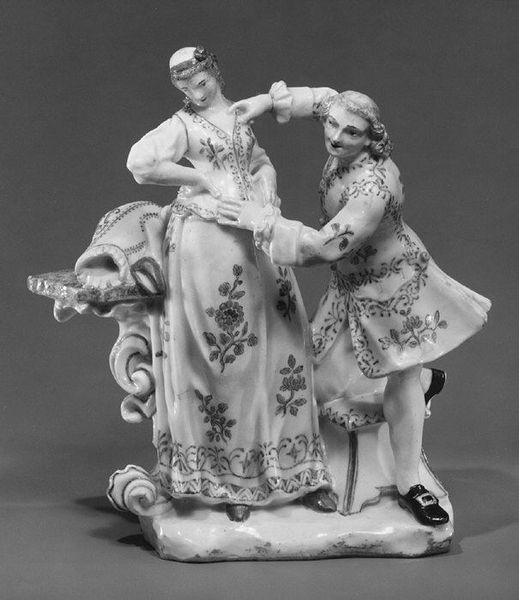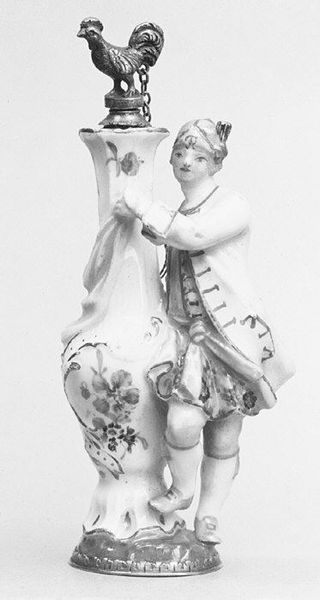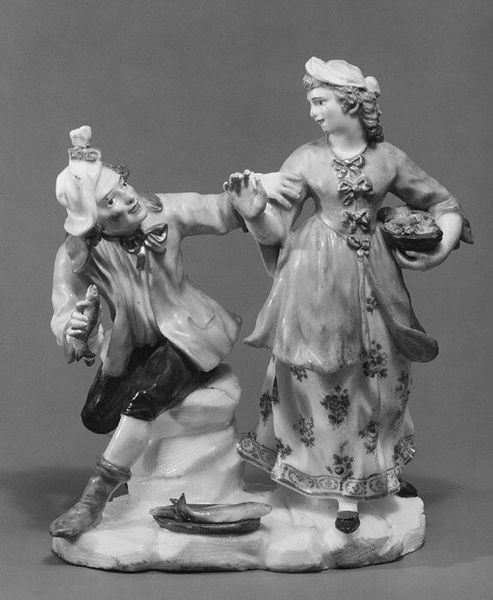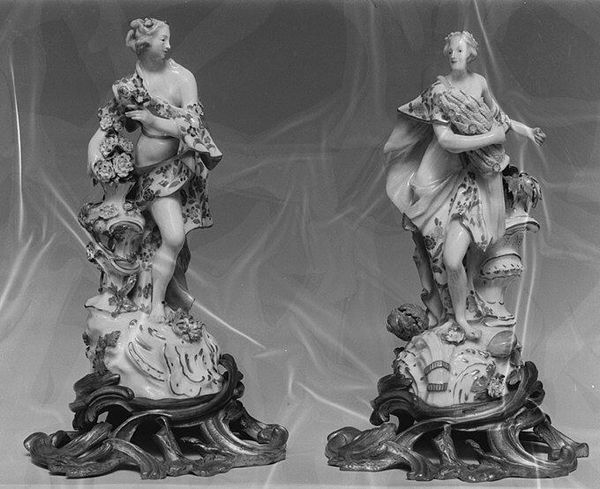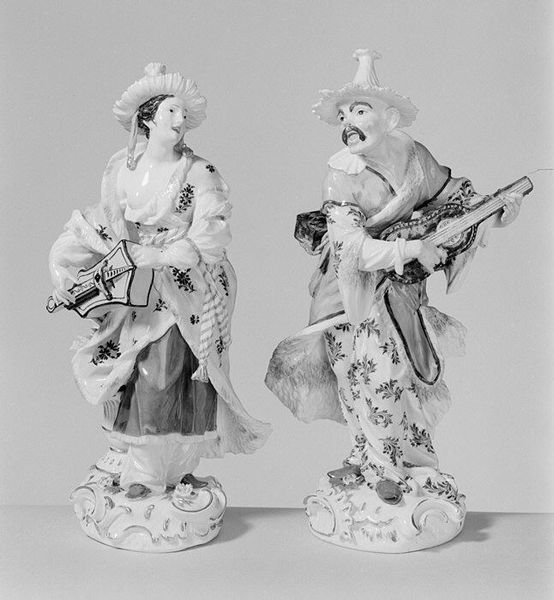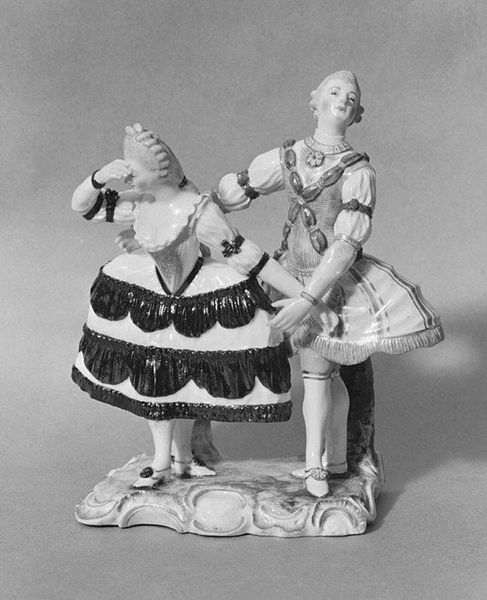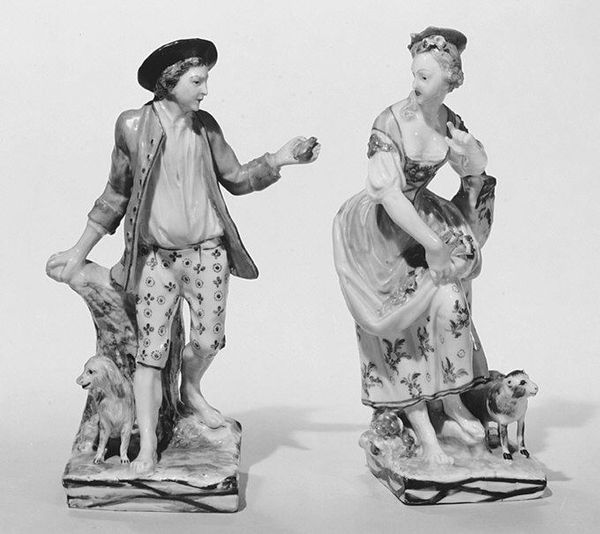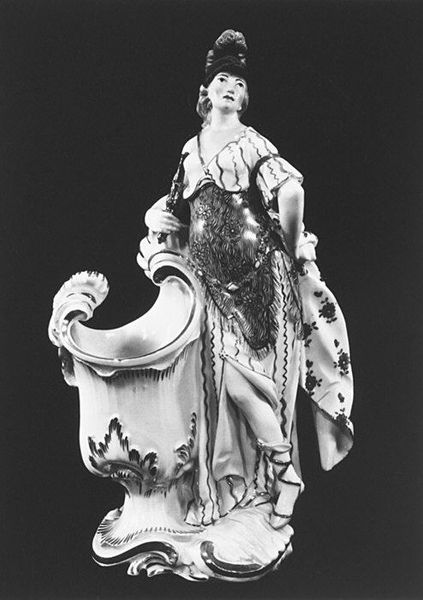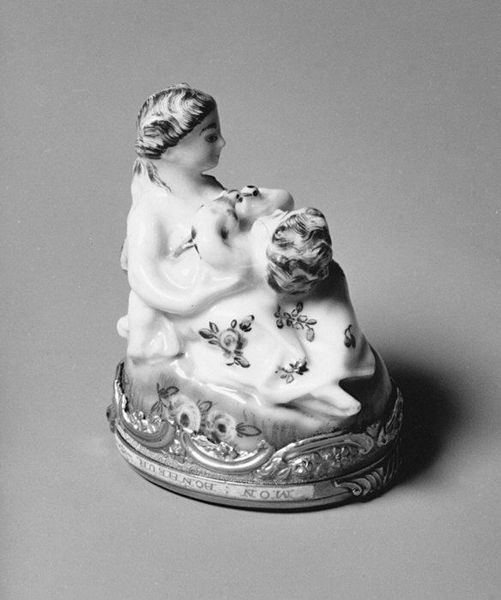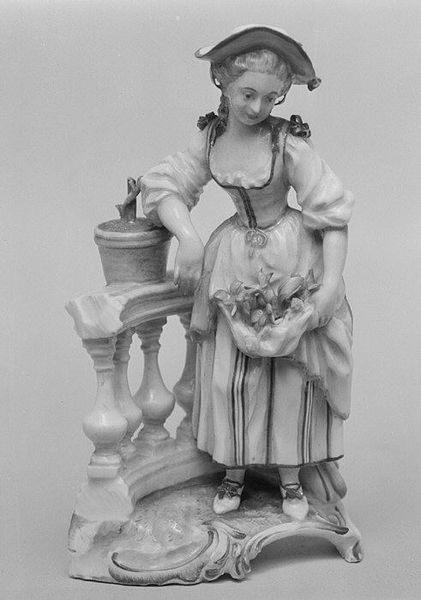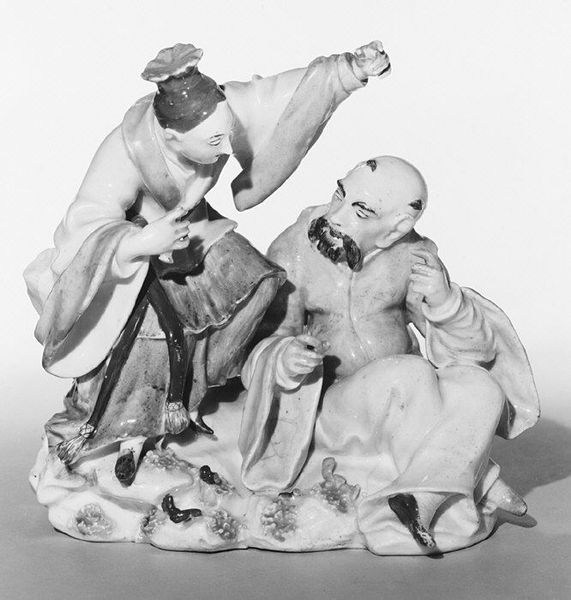
Man and girl with dog dressed as harlequin 1760 - 1770
0:00
0:00
ceramic, porcelain, sculpture
#
sculpture
#
ceramic
#
porcelain
#
figuration
#
sculpting
#
sculpture
#
men
#
genre-painting
#
decorative-art
#
miniature
#
rococo
Dimensions: Height: 10 1/8 in. (25.7 cm)
Copyright: Public Domain
Curator: "Man and girl with dog dressed as harlequin" crafted between 1760 and 1770 by the Derby Porcelain Manufactory. The work exemplifies the decorative arts of its time and can be found right here at the Metropolitan Museum of Art. Editor: Oh, it’s darling! But also quite unsettling. Porcelain figures often evoke this sort of uncanny valley feeling for me, a sense of fragile artifice mimicking humanity. Curator: It's fascinating how you immediately focus on the feeling it provokes. Consider the era. Rococo decorative arts frequently employed porcelain to depict idealized scenes of leisure and status. What roles were truly available to working people or women in that period? Editor: Exactly! This porcelain tells me of intense, back-breaking, often invisible labor. How many hands shaped, fired, and painted this delicate tableau? The mining of the clay, the grinding of pigments – there is so much unseen toil embodied in the shiny, finished product. Curator: A keen observation. And, beyond the visible craftsmanship, note how the depiction of a young girl and a man, both seemingly infatuated with the costumed dog, normalizes very specific hierarchies of the time. We must not disregard the power dynamics inherent in the class, gender, and generational depictions portrayed here, the historical context through a lens that interrogates power structures. Editor: And don't forget the symbolism embedded in the materials themselves. Porcelain, initially imported from China, represented global trade and colonial ambitions. Its production in Europe marked a shift in economic power and a desire to replicate the East while exploiting its resources. The whole project is drenched in class, gender and colonial politics of production and desire. Curator: A perfect summary; one of the strengths of studying art is being forced to examine these historical inequities and understand their continued effect on today’s world. The very concept of a harmless or “decorative” art can be reexamined as a conduit for normalizing existing injustices. Editor: Indeed, confronting the complex web of creation, consumption, and historical power that underlies seemingly simple figurines brings us closer to a deeper understanding of both art and ourselves.
Comments
No comments
Be the first to comment and join the conversation on the ultimate creative platform.
